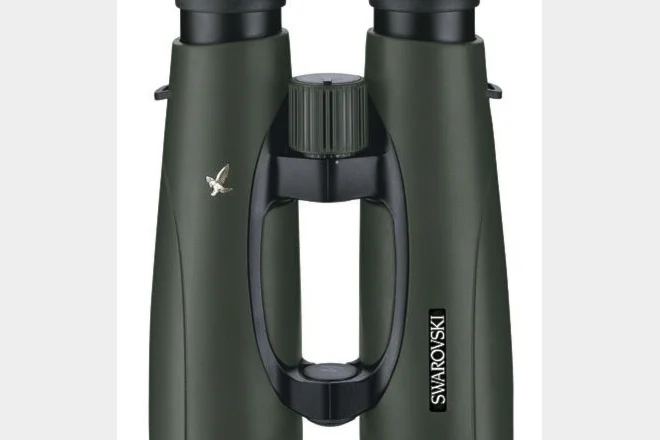Swarovski EL50 12x50 and 10x50 binoculars
Most binocular manufacturers with their sights on the birding market pitch new models squarely at two sectors, with objective lens sizes of 30-32 mm and 40-42 mm clearly the most popular. Swarovski did just that with its first EL range by launching 42 mm and then 32 mm models. With the company’s two-year-old ELII hitherto only represented by 8.5x42 and 10x42 versions, I felt sure that the next release would be a 32 mm unit. What do I know? In February this year the company unveiled its latest EL, a 50 mm binocular available in both 10x and 12x guises (see Birdwatch 226: 41).
Perhaps I shouldn’t have been surprised. Binoculars have got lighter in recent years, and as the grams are trimmed off through new casting materials and other refinements, there’s more leeway for larger objective lenses. I recall using 10x50s very early in my birding career, but as a teenager those bulky porro prisms didn’t leave happy memories. How would a state-of-the-art version compare? For this review, I spent most time with the 12x50, the spec most different to the ELII 10x42 that I reviewed previously (Birdwatch 214: 44). But to make things more interesting I also tried out the 10x50s to see how they compared in terms of brightness and depth of field. In terms of physical appearance, there is nothing to distinguish these two 50 mm models from each other.
Although visibly longer and broader at the front end than the 10x42s, I was immediately struck by the relative lightness of the 12x50s. Sure, you can feel the difference, but at 998 g and with a comfortably broad neoprene strap, they are not overly heavy on the neck or to hold. And while the 50 mm objective lenses contribute to that weight gain, they’re remarkably well balanced in the hand, and I soon felt comfortable taking them into the field for extended periods.
Optically, the image is tremendous, being as bright and razor sharp as in the 10x42. The quality of the image is consistent across the field of view, with no fringing or colour cast discernible to my eye. Focusing is by means of a centrally located ribbed wheel which, as in previous models, clicks out to permit dioptre adjustment to +/-4.
Adjusting focus from the closest point to infinity takes two full turns of the focusing wheel, but as the first turn covers only the first four or five metres, in practice refocusing is minimal in the great majority of birding situations. The minimum focusing distance, incidentally, is quoted at 2.8 m, but I measured it at closer to 2.3 m – very respectable indeed for a binocular of this specification.
With unquestionable build quality and optical performance, the biggest factor influencing the decision to purchase these 50 mm ELs (and they do not come cheap) is their intended use in the field. Having tried out the 12x50 in various birding situations over several weeks this spring, I can see why it will surely win admirers. Scanning for distant raptors in the Brecks, for example, the extra magnification was useful for homing in on a distant pair of Goshawks one morning as they rose up from a conifer plantation. In April on the Isle of Wight, seawatching from St Catherine’s Point – where scoters, terns, auks, Gannets and the odd skua were passing at some range offshore – again proved the worth of the extra magnification in picking up distant birds.
In such situations, there is an inevitable trade-off with the field of view. In the 12x50 it is 100 m at 1,000 m – this was fine for me, but those who want more might prefer the 10x50 model, which offers 115 m at 1,000 m (surpassing even the 10x42’s 112 m at 1,000 m). The 10x50 also offers the advantage of a brighter image, clearly a plus point in other situations. If I had to choose, though, I would probably opt for the greater magnification of the 12x50 as a better fit for my birding.
Both models share other benefits of the second-generation EL range, such as field-flattening lenses, high-definition optics, improved coatings and, of course, gas-filled waterproofing. Large eye relief means there is no restriction on the field of view for spectacle wearers, and like the 10x42, these new models come with articulated rainguard, strap, objective lens covers, lens cloth, disposable lens cleaning tissue, field bag (wearable over the shoulder or around the waist) and a very useful snap-on adapter for digibinning.
The addition of these two 50 mm models to the EL range broadens the choice of premium birding optics, and will surely attract interest not just from potential customers, but from other optical companies looking for emerging trends.
Tech spec |
|
Price: £2,010 (10x50), £2,035 (12x50) Size: 174x134 mm Field of view: 998 g Close focus: 115 m (10x50), 100 m (12x50) at 1,000 m Gas-filled: yes Waterproof: yes Guarantee: 10 years |


